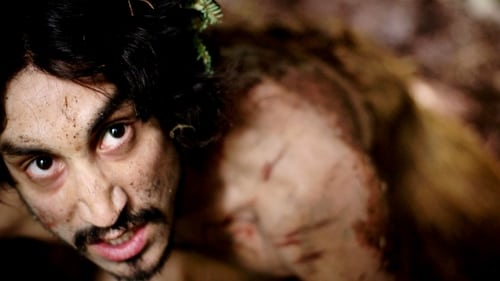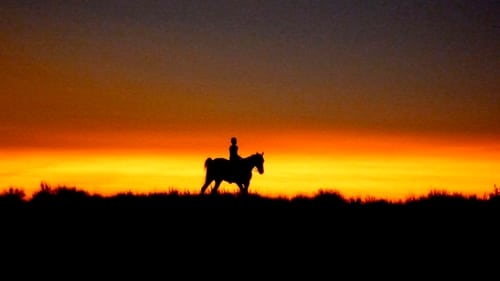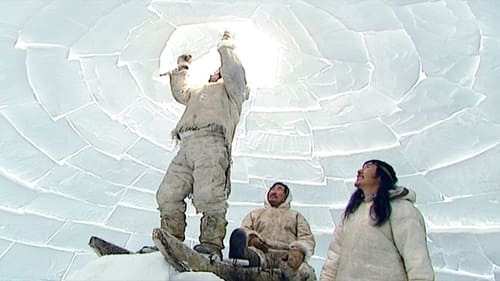Zacharias Kunuk
出生 : 1957-11-27, Kapuivik, Nunavut, Canada
略歴
Zacharias Kunuk is a Canadian Inuk film writer, director and producer, best known for writing and directing the feature film _Atanarjuat: The Fast Runner_, the first indigenous film with all indigenous cast and entirely in Inuktitut.

Producer
A young shaman must face her first test: a trip underground to visit Kannaaluk, The One Below, who holds the answers to why a community member has become ill.

Writer
A young shaman must face her first test: a trip underground to visit Kannaaluk, The One Below, who holds the answers to why a community member has become ill.

Director
A young shaman must face her first test: a trip underground to visit Kannaaluk, The One Below, who holds the answers to why a community member has become ill.

Producer
1961. In Kapuivik, an Inuit man named Noah Piugattuk and his compatriots are visited by a white man who says they have to move to a reservation.

Writer
1961. In Kapuivik, an Inuit man named Noah Piugattuk and his compatriots are visited by a white man who says they have to move to a reservation.

Director
1961. In Kapuivik, an Inuit man named Noah Piugattuk and his compatriots are visited by a white man who says they have to move to a reservation.

Executive Producer
Island of Haida Gwaii, northern Canada, 19th century. During a fishing gathering, Adiits'ii commits an unfortunate act. Tormented, he runs away to the wilderness as his mind embraces madness.

Editor
Inuk filmmaker Zacharias Kunuk (Atanarjuat: The Fast Runner) returns with this Arctic epic inspired by the classic John Ford western of the same name, about a vengeful husband who sets off in pursuit of the violent men who kidnapped his wife and destroyed his home.

Writer
Inuk filmmaker Zacharias Kunuk (Atanarjuat: The Fast Runner) returns with this Arctic epic inspired by the classic John Ford western of the same name, about a vengeful husband who sets off in pursuit of the violent men who kidnapped his wife and destroyed his home.

Producer
Inuk filmmaker Zacharias Kunuk (Atanarjuat: The Fast Runner) returns with this Arctic epic inspired by the classic John Ford western of the same name, about a vengeful husband who sets off in pursuit of the violent men who kidnapped his wife and destroyed his home.

Director
Inuk filmmaker Zacharias Kunuk (Atanarjuat: The Fast Runner) returns with this Arctic epic inspired by the classic John Ford western of the same name, about a vengeful husband who sets off in pursuit of the violent men who kidnapped his wife and destroyed his home.

Director
In an increasingly urban nation, Canada’s national parks are a treasured escape into extraordinary beauty and rugged wilderness. If the Group of Seven were an introduction to the landscape’s majesty, National Parks Project is the next logical chapter. Fifty-two contemporary artists from across the country, whose talents are as diverse as the parks they set out to explore, used their surroundings as a source of inspiration to blend musical and cinematic skills into collaboratively crafted vignettes. Epic in its ambition to celebrate these locales during Parks Canada’s centennial year, this omnibus film resonates with the knowledge that our unprotected land is more vulnerable than ever. Including films by Zacharius Kunuk, Peter Lynch, Sturla Gunnarsson and John Walker, and music by Sarah Harmer, Sam Roberts, Cadence Weapon and The Besnard Lakes, among many others, National Parks Project is a one-of-a-kind documentary experience.

Director
Director Zacharias Kunuk explores Sirmilik National Park, near the Nunavut community of Pond Inlet, through the voice of an Inuit elder. Winner "Best Short Documentary" 2012 Genie Awards.

Himself
The evolution of the depiction of Native Americans in film, from the silent era until today, featuring clips from hundreds of movies and candid interviews with famous directors, writers and actors, Native and non-Native: how their image on the screen transforms the way to understand their history and culture.

Director
Director Zacharias Kunuk (Atanarjuat The Fast Runner) and researcher and filmmaker Dr. Ian Mauro (Seeds of Change) have teamed up with Inuit communities to document their knowledge and experience regarding climate change. This documentary, the world's first Inuktitut language film on the topic, takes the viewer "on the land" with elders and hunters to explore the social and ecological impacts of a warming Arctic. This unforgettable film helps us to appreciate Inuit culture and expertise regarding environmental change and indigenous ways of adapting to it.

Director
Zacharias Kunuk tackles the subject of the High Arctic Relocation from an Inuit point of view in the documentary Exile. In 1953, Inuit families were forcibly relocated to the uninhabited and inhospitable high arctic, 1500 kilometres north of their traditional homeland of Nunavik, in northern Québec. The goal of the move was to extend Canadian claims of sovereignty to Ellesmere Island. As a result, Inuit people were forced to endure the pain of families torn apart and many years of hardship. With devastating first-person accounts of survival, the trail of broken promises and shameful practices of the government and the RCMP, this powerful documentary captures the long-standing effects of these events from the perspectives of the people who were forced to endure them.

Director
A group of Nunavut elders travel to five museums in North America to see and identify artifacts, tools and clothing collected from their Inuit ancestors. Directed by Zacharias Kunuk and Bernadette Dean.

Art Direction
Based on the journal of Knud Rasmussen's "Great Sled Journey" of 1922 across arctic Canada. The film is shot from the perspective of the Inuit, showing their traditional beliefs and lifestyle. It tells the story of the last great Inuit shaman and his beautiful and headstrong daughter; the shaman must decide whether to accept the Christian religion that is converting the Inuit across Greenland.

Production Design
Based on the journal of Knud Rasmussen's "Great Sled Journey" of 1922 across arctic Canada. The film is shot from the perspective of the Inuit, showing their traditional beliefs and lifestyle. It tells the story of the last great Inuit shaman and his beautiful and headstrong daughter; the shaman must decide whether to accept the Christian religion that is converting the Inuit across Greenland.

Producer
Based on the journal of Knud Rasmussen's "Great Sled Journey" of 1922 across arctic Canada. The film is shot from the perspective of the Inuit, showing their traditional beliefs and lifestyle. It tells the story of the last great Inuit shaman and his beautiful and headstrong daughter; the shaman must decide whether to accept the Christian religion that is converting the Inuit across Greenland.

Director
Based on the journal of Knud Rasmussen's "Great Sled Journey" of 1922 across arctic Canada. The film is shot from the perspective of the Inuit, showing their traditional beliefs and lifestyle. It tells the story of the last great Inuit shaman and his beautiful and headstrong daughter; the shaman must decide whether to accept the Christian religion that is converting the Inuit across Greenland.

Producer
Based on a local legend and set in an unknown era, it deals with universal themes of love, possessiveness, family, jealousy and power. Beautifully shot, and acted by Inuit people, it portrays a time when people fought duels by taking turns to punch each other until one was unconscious, made love on the way to the caribou hunt, ate walrus meat and lit their igloos with seal-oil lamps.

Editor
Based on a local legend and set in an unknown era, it deals with universal themes of love, possessiveness, family, jealousy and power. Beautifully shot, and acted by Inuit people, it portrays a time when people fought duels by taking turns to punch each other until one was unconscious, made love on the way to the caribou hunt, ate walrus meat and lit their igloos with seal-oil lamps.

Writer
Based on a local legend and set in an unknown era, it deals with universal themes of love, possessiveness, family, jealousy and power. Beautifully shot, and acted by Inuit people, it portrays a time when people fought duels by taking turns to punch each other until one was unconscious, made love on the way to the caribou hunt, ate walrus meat and lit their igloos with seal-oil lamps.

Director
Based on a local legend and set in an unknown era, it deals with universal themes of love, possessiveness, family, jealousy and power. Beautifully shot, and acted by Inuit people, it portrays a time when people fought duels by taking turns to punch each other until one was unconscious, made love on the way to the caribou hunt, ate walrus meat and lit their igloos with seal-oil lamps.

Director
From the Unikaatuatiit (Story Tellers) Series. A film by Isuma Productions.

Writer
As summer ends near Igloolik in the 1930's, three families build a saputi to trap fish going upriver for the winter. The days are getting shorter and young people daydream, while waiting for fish to come. But nature is not always predictable.... [Third Isuma recreated fiction, 1993.]

Editor
As summer ends near Igloolik in the 1930's, three families build a saputi to trap fish going upriver for the winter. The days are getting shorter and young people daydream, while waiting for fish to come. But nature is not always predictable.... [Third Isuma recreated fiction, 1993.]

Director
As summer ends near Igloolik in the 1930's, three families build a saputi to trap fish going upriver for the winter. The days are getting shorter and young people daydream, while waiting for fish to come. But nature is not always predictable.... [Third Isuma recreated fiction, 1993.]

Director
In 1991, Igloolik Isuma Productions gathered 13 Igloolik elders for a week of discussion, to choose and then record 24 traditional ajaja songs considered most important to preserve for the future: where did the songs come from, how where they made and how have they been passed down generation to generation? Each elder remembers their own family's ajaja songs and explains how they were created by poets taking their words from their life experiences. The video, translated and subtitled for the first time, includes priceless footage of these elders singing and drumming the songs, and their playfully combative and humorous interactions are a joy to watch. The process also allowed Isuma to publish a full CD of the selected songs and to use and preserve many of them in Isuma's films over the next 25 years.

Producer
For the Igloolik Inuit, summer is the time of Nunaqpa, 'going inland,' that is, hunting for caribou to get sufficient meat provisions for the cold winter ahead. During a summer in the 1930s, two Igloolik families go hunting, while an old couple awaits their return.

Writer
For the Igloolik Inuit, summer is the time of Nunaqpa, 'going inland,' that is, hunting for caribou to get sufficient meat provisions for the cold winter ahead. During a summer in the 1930s, two Igloolik families go hunting, while an old couple awaits their return.

Director
For the Igloolik Inuit, summer is the time of Nunaqpa, 'going inland,' that is, hunting for caribou to get sufficient meat provisions for the cold winter ahead. During a summer in the 1930s, two Igloolik families go hunting, while an old couple awaits their return.

Producer
Four Inuit families build a qaggiq, a large communal igloo, to mark the approach of spring with singing and games. A young man woos a girl but her parents are in disagreement over whether he shall get to marry her.

Director
Four Inuit families build a qaggiq, a large communal igloo, to mark the approach of spring with singing and games. A young man woos a girl but her parents are in disagreement over whether he shall get to marry her.

Director
In 1985, Zacharias Kunuk broke the race barrier at Canada Council for the Arts when his Inuktitut-language video, From Inuk Point of View, was the first work by an Inuit or Aboriginal artist deemed eligible to apply for a professional artist's grant. Kunuk was the video's director and producer; Norman Cohn cameraman; Paul Apak Angilirq editor; and elder Pauloosie Qulitalik as narrator. By 1990, the four partners had formed Igloolik Isuma Productions Inc. to produce independent video art from an Inuit point of view. The video also features footage shot by Zacharias Kunuk, Paul Apak Angilirq and Simon Quassa, along with narration from three other well-respected Igloolik elders.







